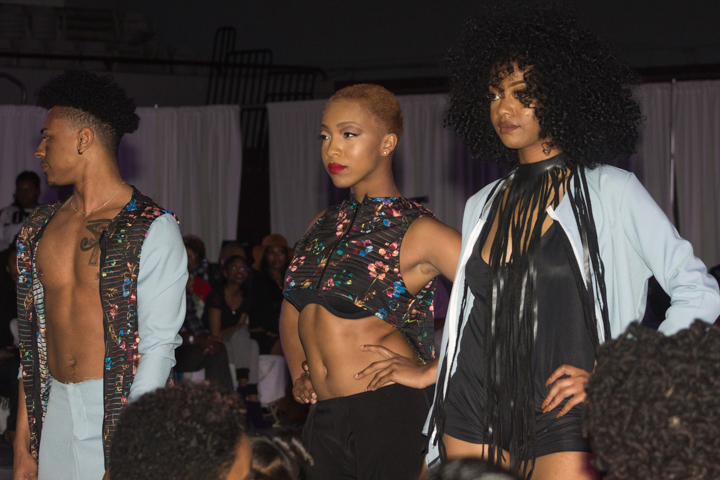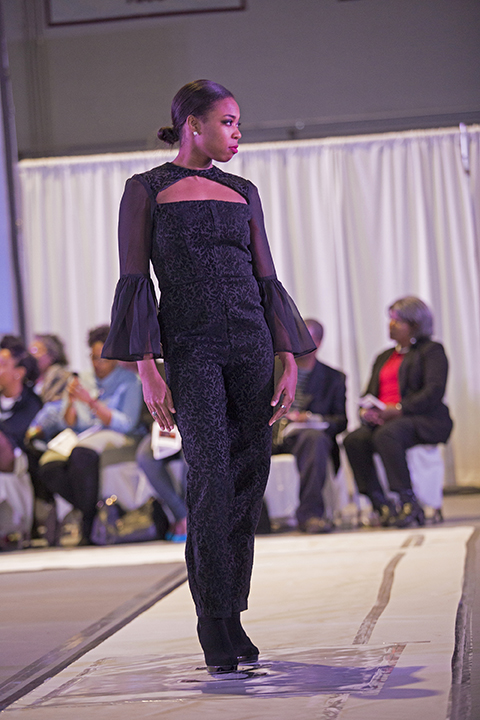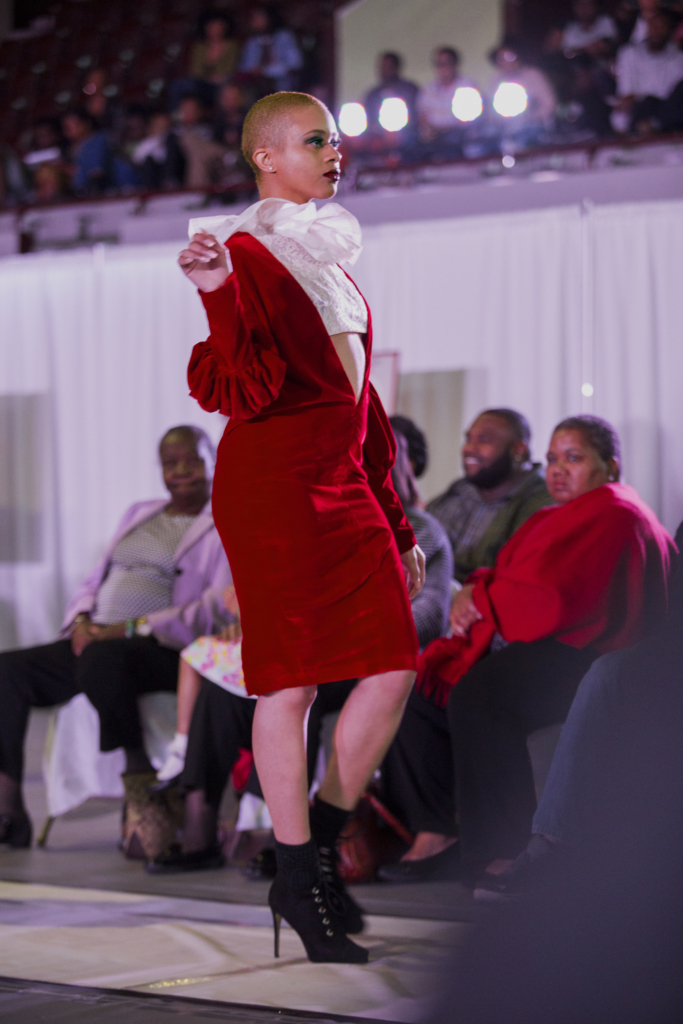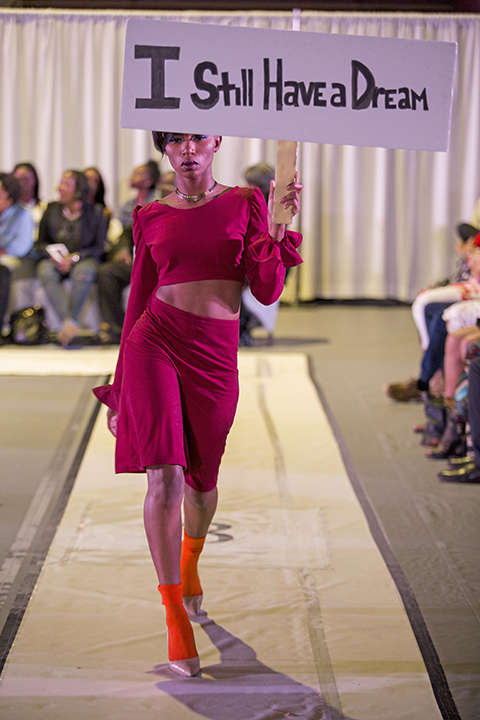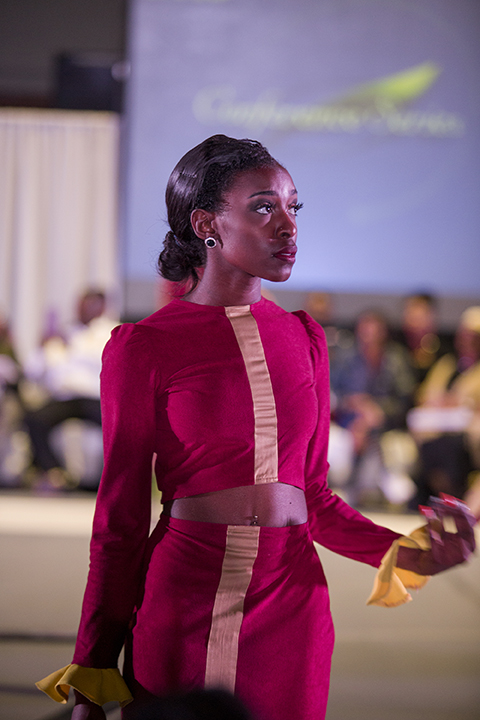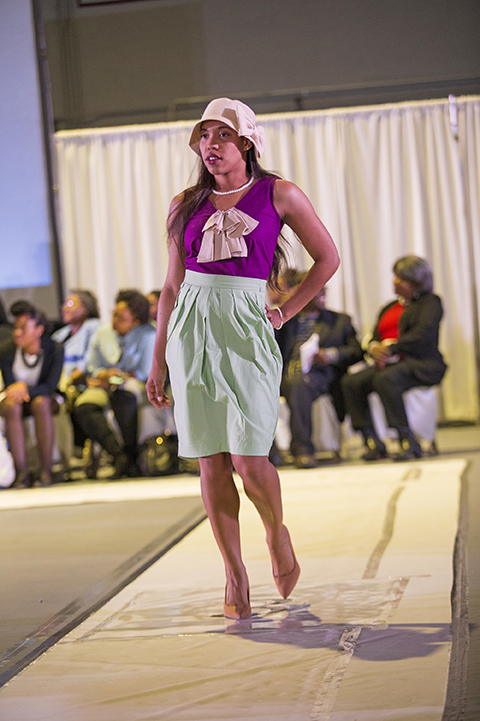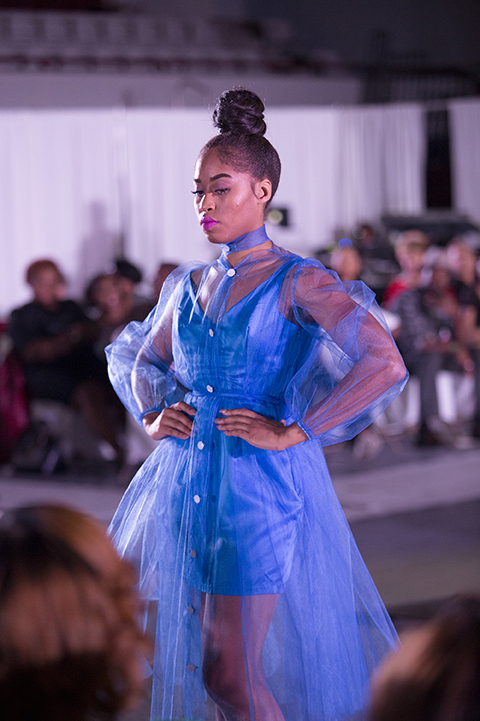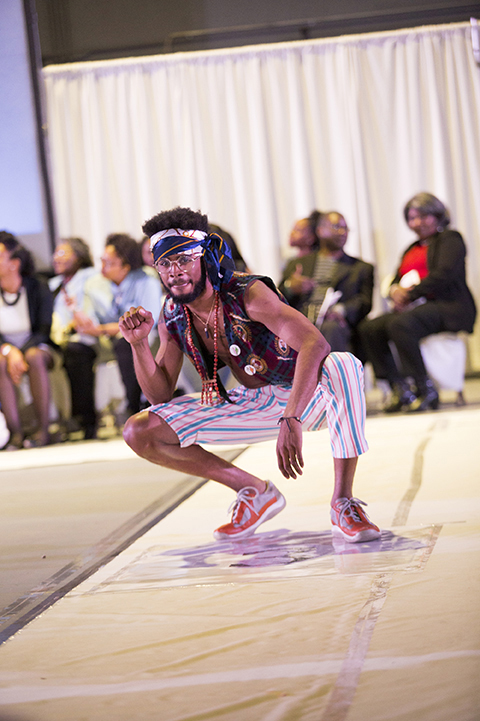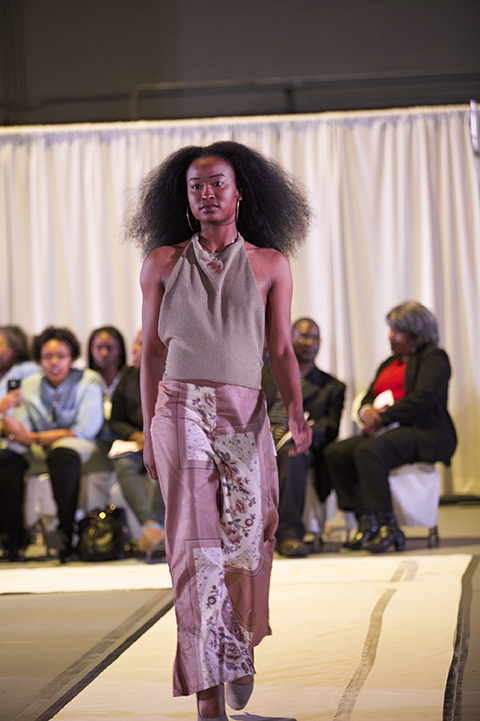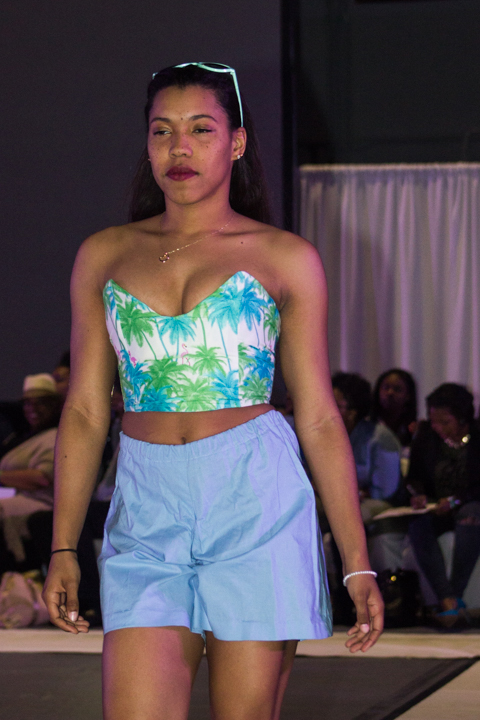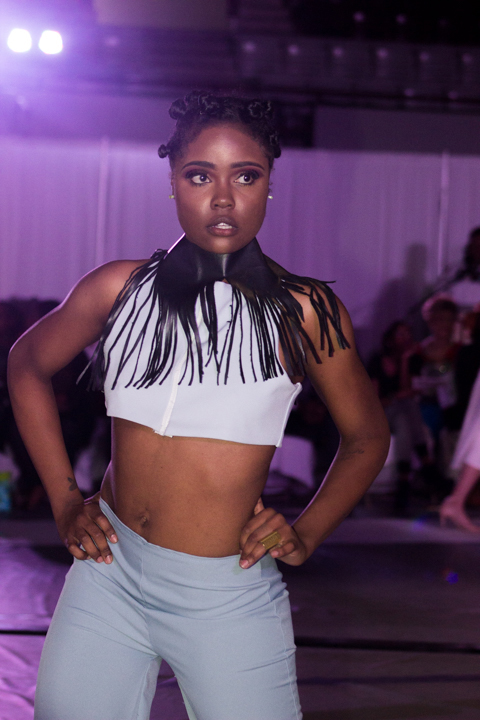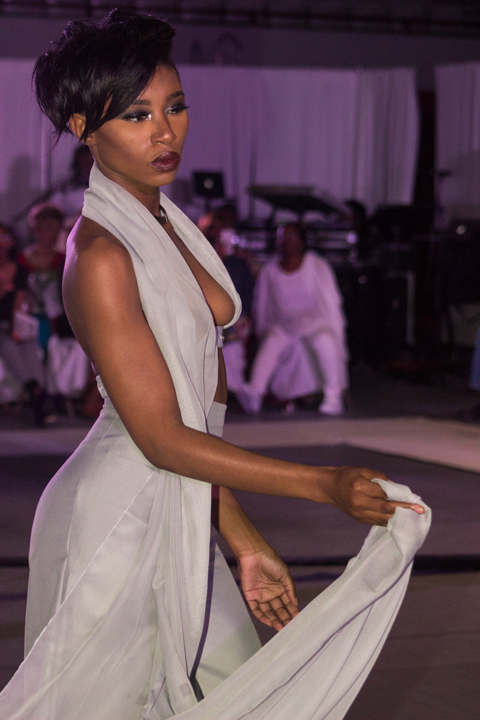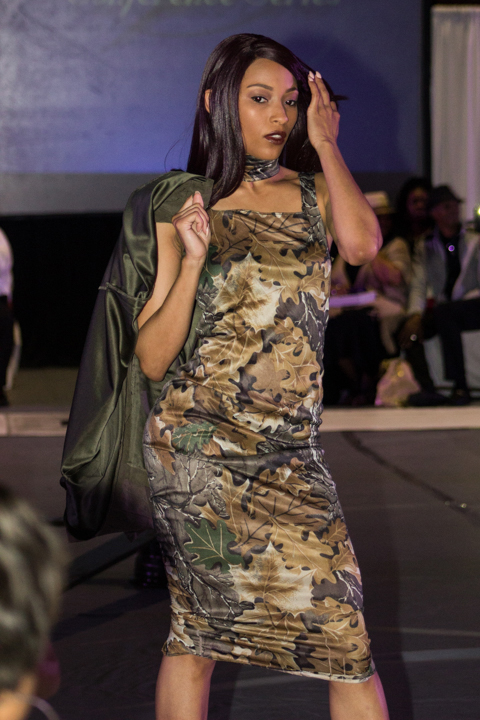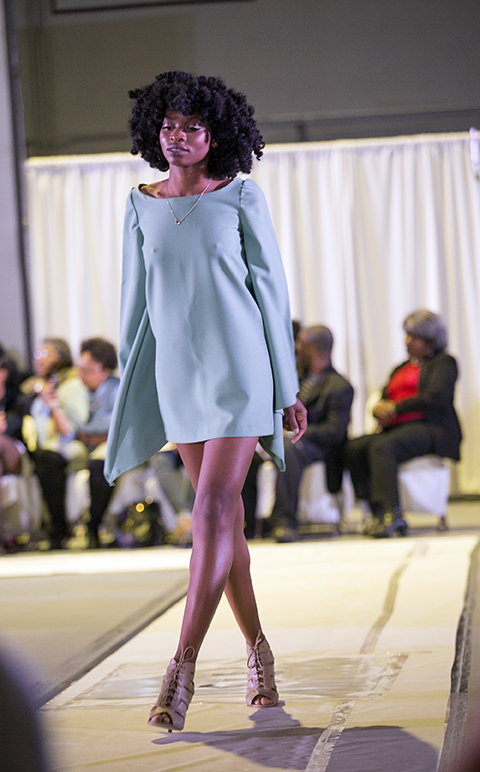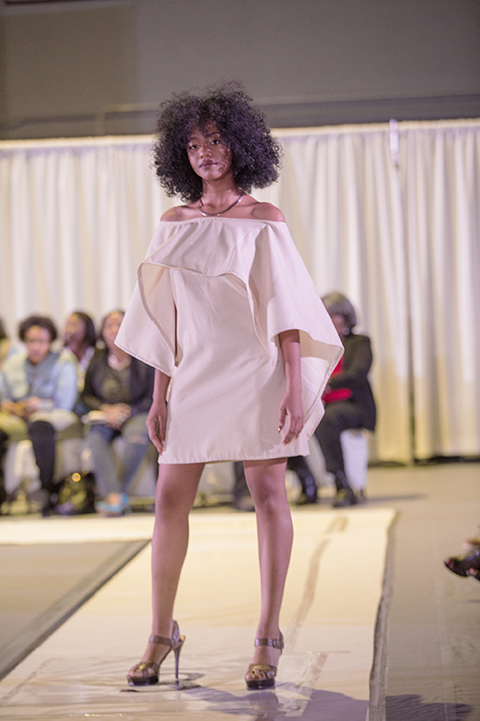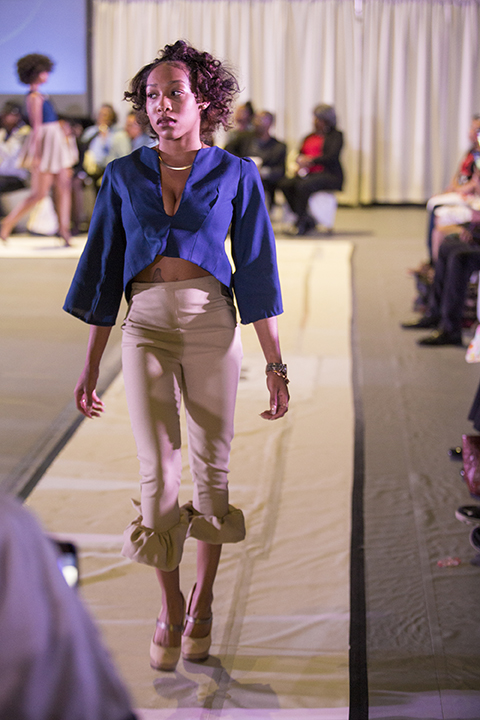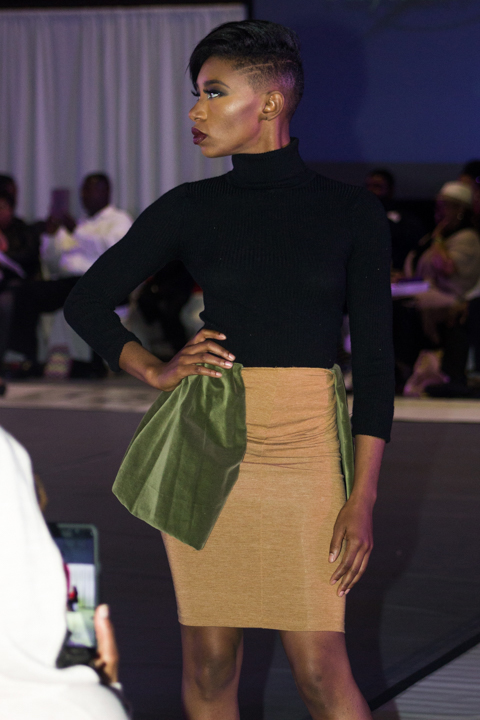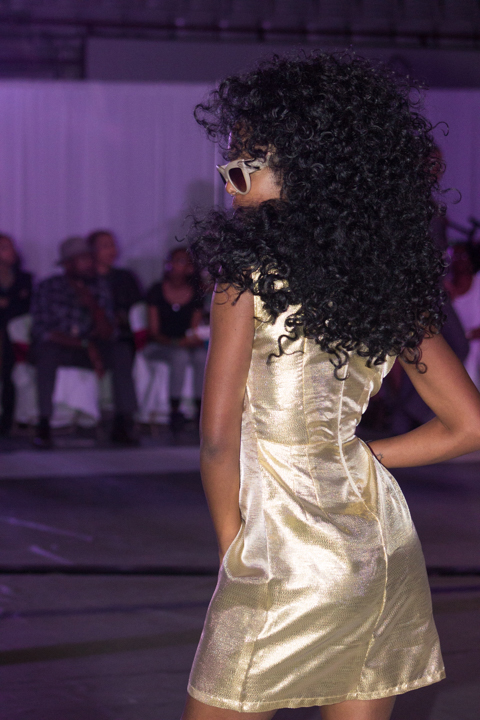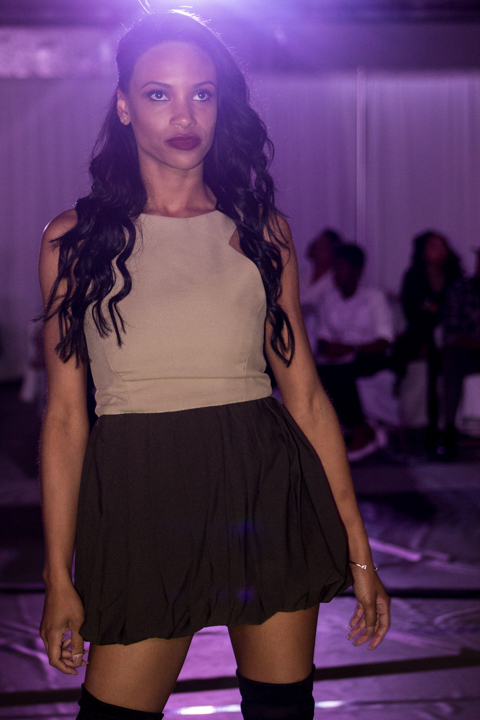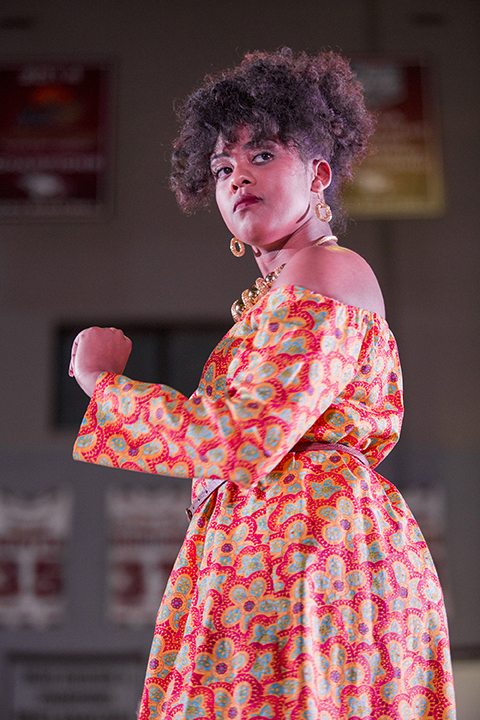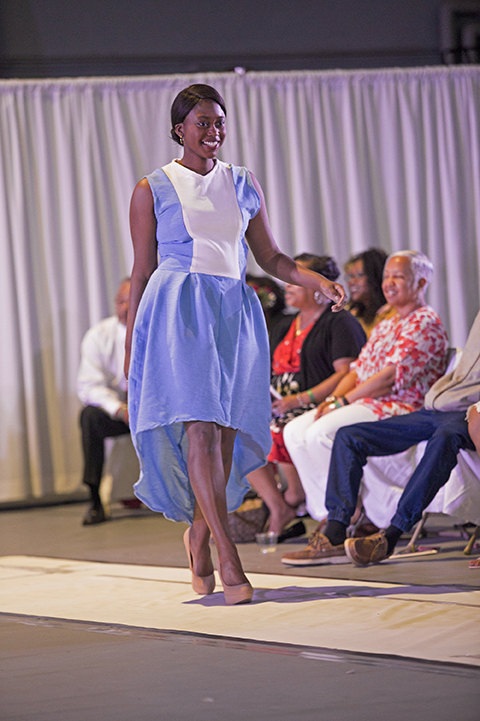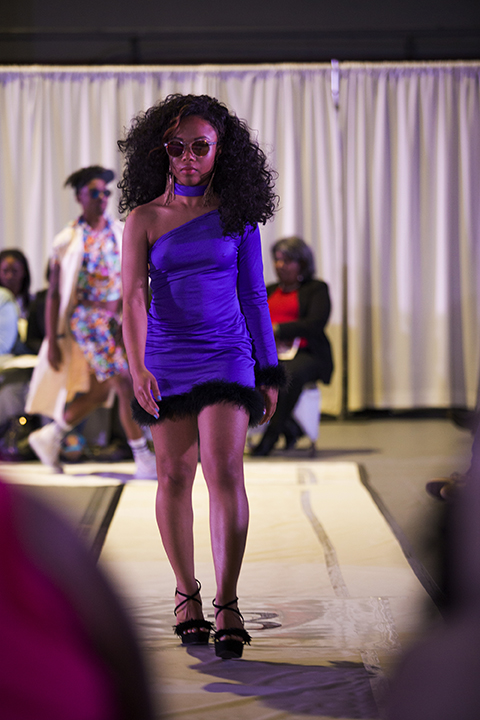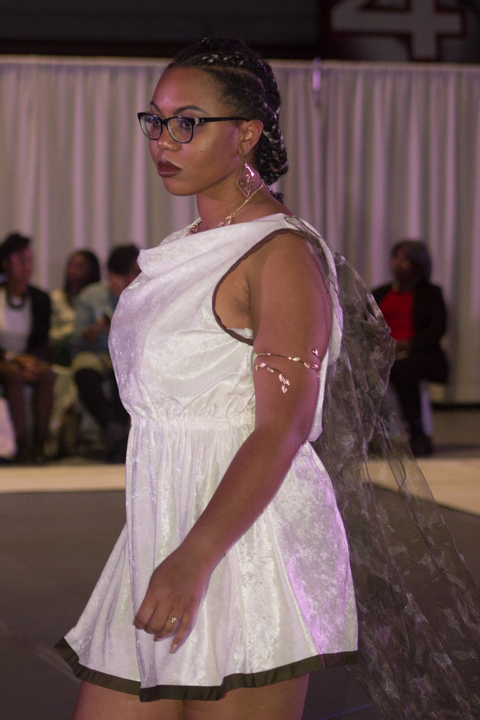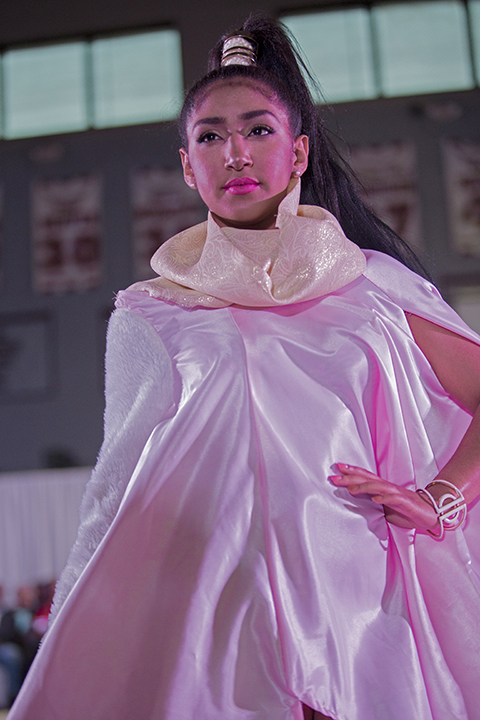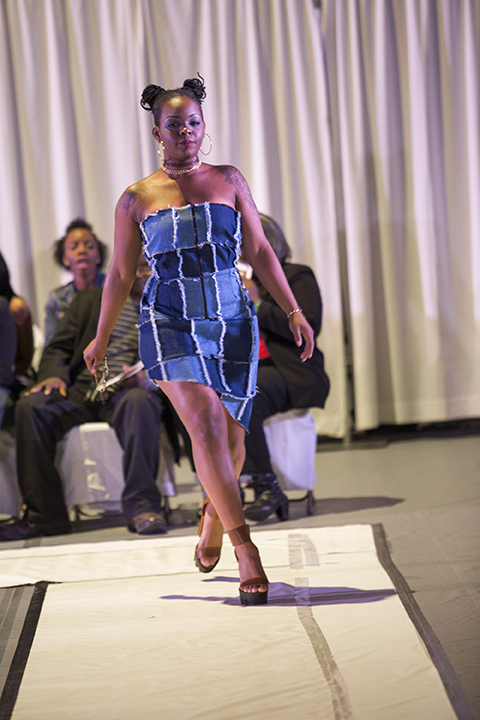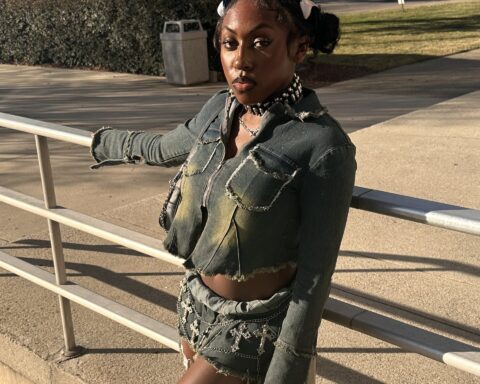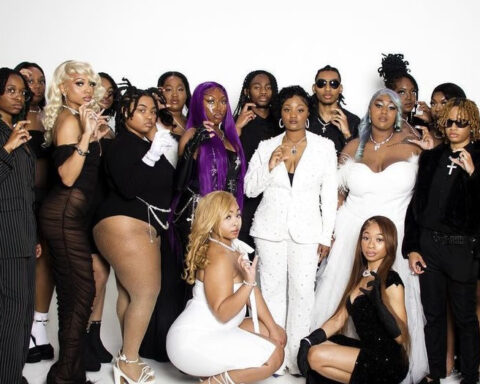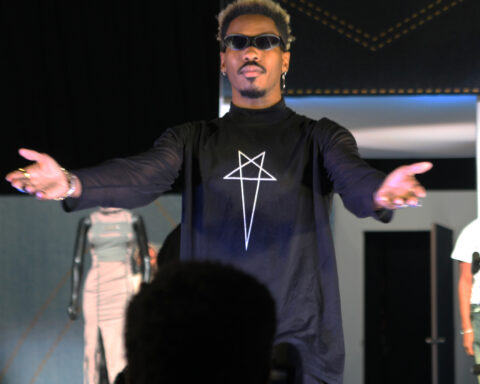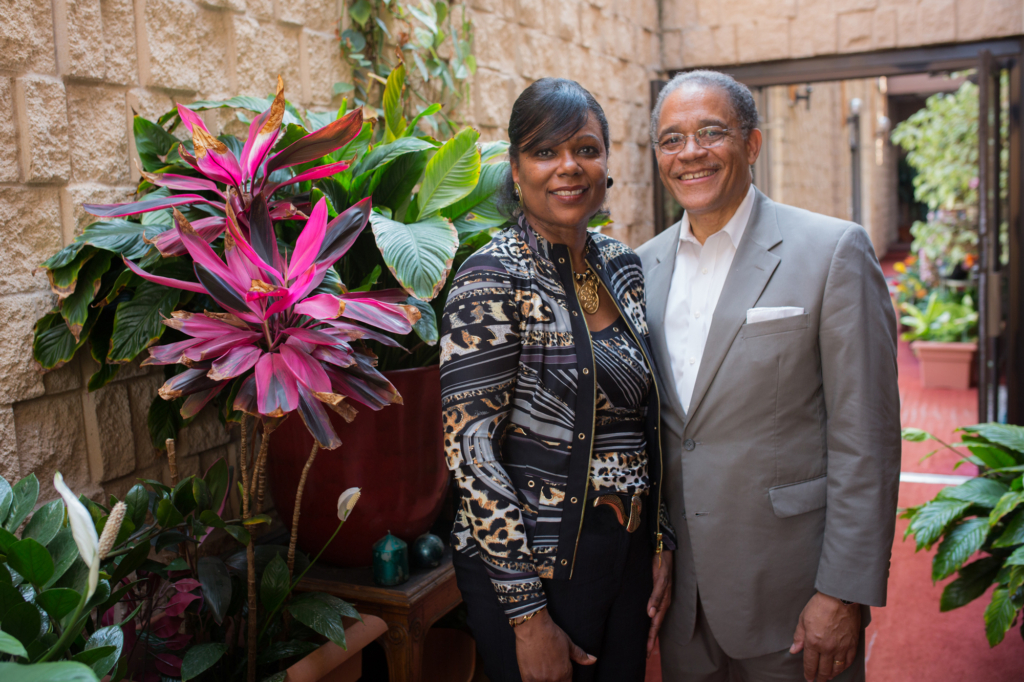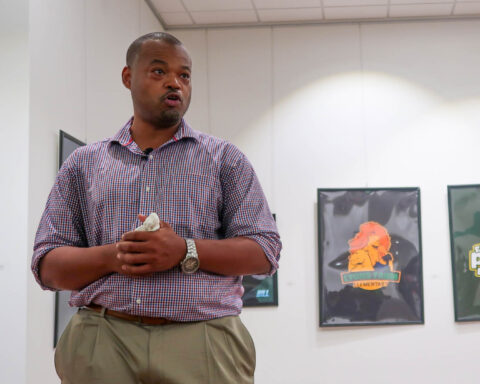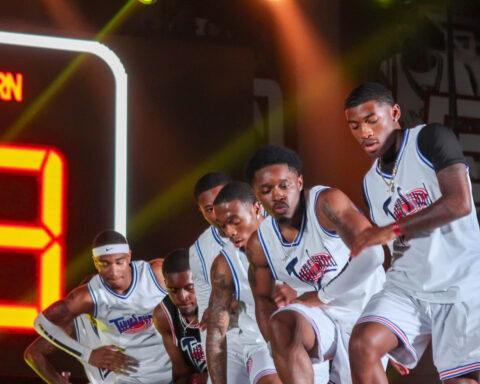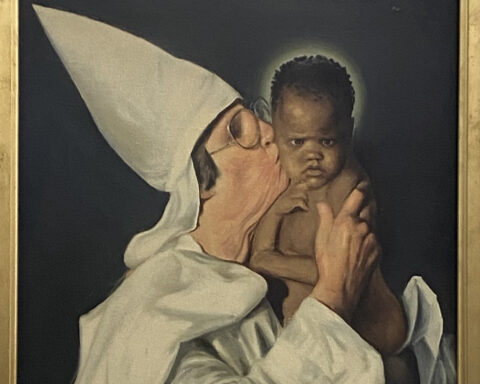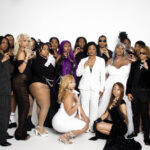Fashion isn’t always for just looking nice. It can represent personality, culture, and different historical moments. It was the way fashion can express different historical moments that was explored by N.C. Central University student designers on April 14 in McDougald-McLendon Gymnasium.
The exploration of history and fashion was sponsored by the Department of Human Sciences and organized and planned by Fashion Inc., a student organization. In “Eras of Time,” this year’s fashion theme, 29 designers selected historical moments ranging from the ancient Greek and Egyptians to the Middle Ages to the 1960s to the early 2000s.
These points in time were used by the designers to explore the expressive quality of fabrics, to make political statements, and to pay homage to timeless fashion icons such as Twiggy.
The gym’s basketball floor was redesigned as a runway that looks like a clock. Its hands changed throughout the show to mark the passage of time.
VIP guests, family, friends, and fashion enthusiasts, competed to win one of the 20 door prizes, including the chance to go home with an outfit from each designer.
Baheeyah Madany was the night’s first designer to show her work on the runway. She drew her inspiration from the 1500s and 1600s. Her collection was simple, but had regal and refined patterns on black and white suede. The outfits were flooded with tulle and lace from the cuffs to the collars.
Her last ensemble channeled Queen Elizabeth I, with an eye-popping red deep-v cut dress adorned with a white lace bandeau and a tulle neck ruff around the neckline.
Mass communication senior Melquan Ganzy and his models walked tall on the runway with designs inspired by the 1960s. This collection, in dark greens, reds and yellows, drew upon both popular culture figures, such as Austin Powers, and historical figures such as Dr. Martin Luther King, Jr. On the sleeves of his designs, he incorporated flower shapes to memorialize the Civil Rights Movement and the four young girls killed in 16th Street Baptist Church bombing in Birmingham, Ala.
His models carried signs from the period: “I still have a dream” and “I shall overcome.”
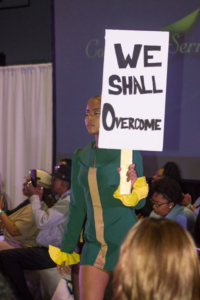
Junior Alexus Radcliffe and her models powered through the catwalk with garments that echoed the early 20th century and World War I. Her work was styled with camouflage colors with some delicate elements, which gave Radcliffe’s designs an edgy, but sophisticated look.
Designs from Tre Thompson and Ja’Mareia Bonner came out on the ticking runway with mod fashions made for every occasion and every personality.
Their designs didn’t shimmer or make a lavish fashion statement like some other designers, but their mod designs didn’t need those qualities to stand out. Their designs, drawing on the Twiggy phenomena of the early 1960s, cleverly balanced simplicity and sophistication.
Fashion show top honors were awarded to Ja’Mareia Bonner, Baheeyah Madany, Tre Thompson, for first, second and third places respectively.
For the designers, just getting to the fashion show is a monumental project. They first have to select a historical theme, and then match their design ideas to that theme, then create the designs, make and fit the designs to their models.
“Fit is definitely important. You have to make sure your garment fits your model very well,” Bonner said. “I had to have my model come in a couple of times. I had to make sure that everything fit them right and that it catered to their body.”
Bonner said she was thrilled and surprised to take top honors. “That was amazing and it was a great feeling.”
Bonner drew on a fashion aesthetic that allows for easy transitions from day to night wear. Fashion model Twiggy and designer Mary Quant were her muses for her collection.
“Mary Quant was really big on mod. She kind of brought the mod scene to Britain and my other muse, Twiggy, brought mod to America. I wanted to take that put my own spin on it,” said Bonner. “It speaks for itself. It also has a modern take on it to where you can wear it every day.”
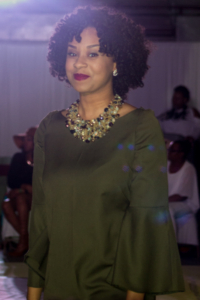
This is Thompson’s second year designing for the show. He says he can see how he’s grown, explaining that last year he only made two looks, but this year he made four looks.
“I definitely learned that I have to be consistent. Start off strong, keep going strong, and finish off strong in order to have a good turnout like I did this year.”
Thompson said that future fashion show designers will need to learn the lesson he’s learned: Do your research. Don’t go in blindly.
“Come ready to work because it’s not easy. It’s very time consuming, but the only way you can get through it is if you build your skill,” he said. “The only way to build your skill is to put in your hours of work.”
Fashion Inc. students are already beginning to think about next year’s theme and show.
“Next year, we have great things in store,” said Fashion Inc. member Monique Sanders. “We want more people to be involved. We don’t want students to think it’s just for fashion majors. It’s for everybody.”

